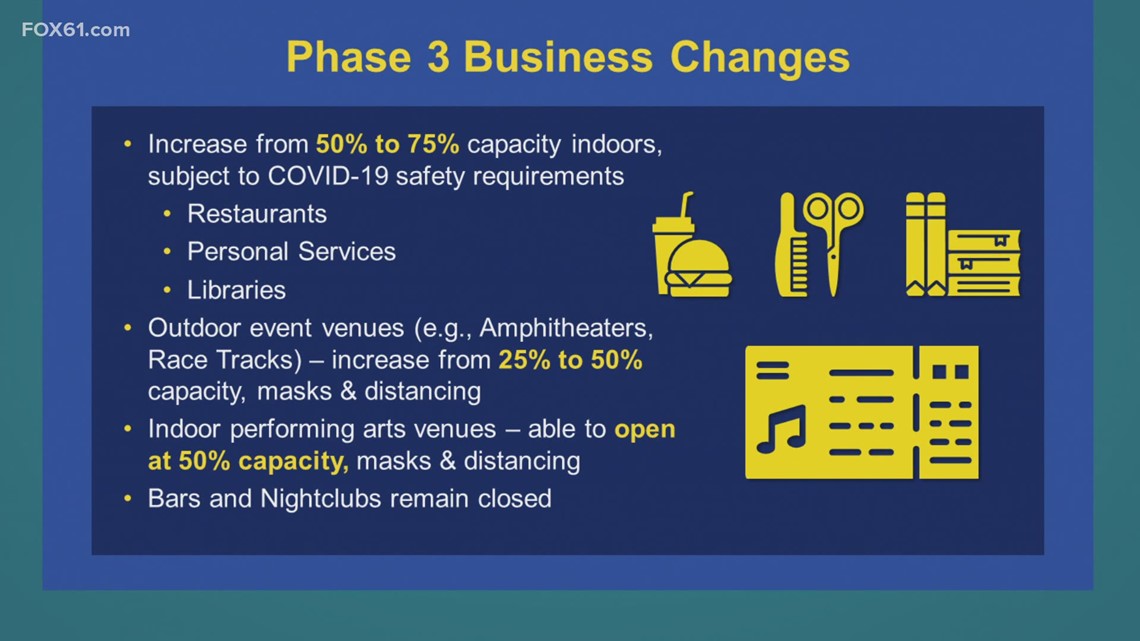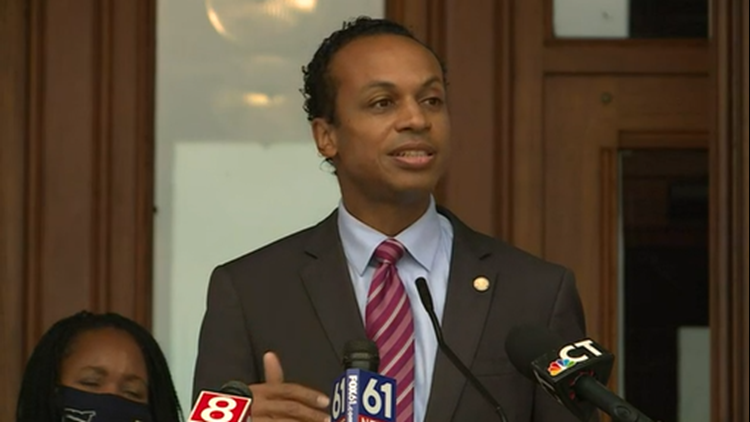HARTFORD, Conn — Governor Ned Lamont and State Treasurer Shawn T. Wooden held a news conference Thursday morning to discuss paying down Connecticut's pension debt.
Outside the north steps of the State Capitol, officials announced the decision to contribute the excess amount in the Budget Reserve Fund (BRF) to the State Employees’ Retirement Fund (SERF).
The State Treasurer's office said in a release:
Whenever the amount in the BRF equals 15% of the net general fund appropriations for the current fiscal year the excess is to be transferred to either the State Employees’ Retirement Fund (SERF) or the Teachers’ Retirement Fund.
Following the release of the State’s preliminary financial statements for Fiscal Year 2020last week, Treasurer Wooden has decided to transfer the balance above the BRF’s statutory 15% limit, currently estimated to be approximately $61.6 million, to the SERF. At 38.2%, the SERF has the greater unfunded service liability.
“As Connecticut continues to realize the financial impacts due to the ongoing economic shockwave of the pandemic, the growth of the State’s BRF is a direct result of smart policy and fiscal discipline that has been practiced over the last few years,” Treasurer Wooden said. “While we continue to responsibly pay down pension liabilities and work to put the State on a sustainable course, Connecticut must also be forward-thinking in its approach and look to new opportunities that can grow our economy, generate significant job creation, and offer a path to a strong and sustainable economic recovery. In the midst of a $2.1 billion looming budget deficit projection for Fiscal Year 2021 and the resulting deficit mitigation measures that will be required, the time is now for government leaders to think ahead to how Connecticut can create new revenue streams for the State and municipalities.”
“Fiscal responsibility is one of the traits that gives confidence to all of our residents that we are utilizing their taxpayer dollars the right way," Gov. Lamont added. "This announcement today shows how our state has prioritized protecting the state’s budget reserve, while also making investments in Connecticut that we know will pay off in the future. Paying down pension debt sends a clear message to all of our residents, businesses, and non-profits that our state is taking seriously the task of providing as much predictability as possible when it comes to our state’s finances.”
Later this afternoon, the governor is also expected to provide his daily coronavirus update during a 4 p.m. press conference.
On Wednesday, Lamont reported that Connecticut reached the second consecutive day of an infection rate of 1.8%.
COVID-19 hospitalization also increased with over 100 being treated.
According to Gov. Lamont, that number is more than we’ve had at any time since late June.
"I don’t want to overstate this, we’re still one of the best in the country," said Lamont.
Three new COVID-19 related deaths were also reported.
The governor announced last week that Connecticut will begin Phase 3 in its reopening plan on October 8.
For businesses like restaurants, barbers shops, and libraries, the indoor capacity has increased from 50 percent to 75 percent. Outdoor events like a race track will see an increase from 25 percent to 50 percent with mask-wearing and social distancing be practiced.
Bars and nightclubs will continue to stay closed. When asked if there was a timeline to reopen these types of businesses, Lamont said there is not one.
Indoor performing venues will increase capacity to 100 people. Private outdoor events will go from 100 to 150 people. Graduations and religious venues will also see an increase in capacity. Graduations will see an increase to 50 percent or 200 people. Religious venues will also see an increase to 50% capacity or 200 people.





